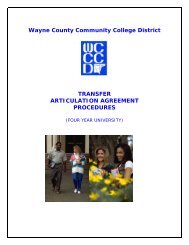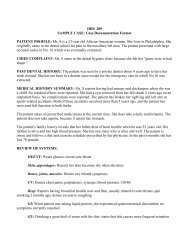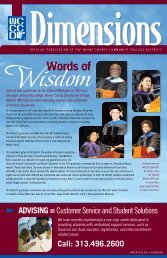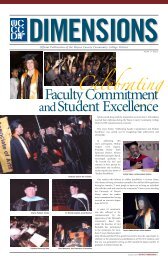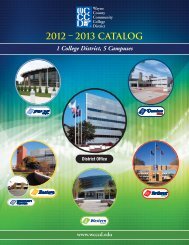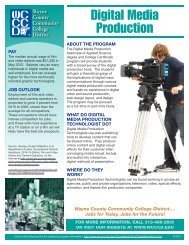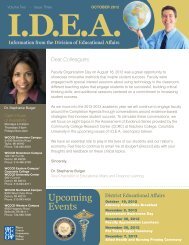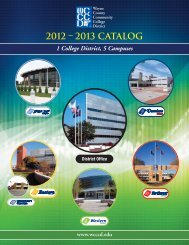ENG 280 Creative Nonfiction Handout
ENG 280 Creative Nonfiction Handout
ENG 280 Creative Nonfiction Handout
You also want an ePaper? Increase the reach of your titles
YUMPU automatically turns print PDFs into web optimized ePapers that Google loves.
Cintrón‐1<br />
What is creative non-fiction<br />
1. Synonyms: Literary non-fiction, new journalism, literary journalism<br />
2. Definition:<br />
A. It is a hybrid of literature and non-fiction:<br />
Non-fiction elements<br />
essay form<br />
explanation/exposition (e)<br />
standard rhetorical patterns<br />
focuses on ideas, facts (not language)<br />
researched facts (R)<br />
Literary elements<br />
story/narration (n)<br />
place/scene/setting (p)<br />
characterization (c)<br />
author personally engaged (s)<br />
literary voice/feel (lx)<br />
artistic, instinctual<br />
polished language<br />
B. It presents a whole picture of the subject (holistic)—recognizes the complexity of the world/<br />
the limits of what we can know.<br />
It presents a way of looking at the world:<br />
--concrete examples, narration<br />
--grounded in self<br />
--interesting to the reader (and writer)<br />
--unique voice<br />
C. It presents documentable subject matter--grounded in real-world facts and issues.<br />
D. It presents useful, interesting facts based on exhaustive research.<br />
E. The facts come alive through narration and setting—or well developed scenes (place).<br />
F. It presents details that help the reader understand the main point.<br />
G. It shows rather than tells.
Cintrón‐2<br />
Goals of creative non-fiction<br />
1. Deal with an issue/problem people are concerned about or find a way to make<br />
them concerned or interested.<br />
Consider your audience<br />
Use non-fiction techniques to draw the reader in:<br />
narration<br />
characterization<br />
setting/place<br />
personal involvement<br />
Give background to educate your readers<br />
Give your readers new information to help them understand themselves, the world better<br />
2.Provide accurate data.<br />
Be truthful. Be honest.<br />
Research thoroughly and carefully (the more you look, the more you’ll find)<br />
Use a variety of sources:<br />
primary (interviews, trips to the place, personal experience, surveys)<br />
secondary (library research . . . .)<br />
Cite your sources so readers know how you gathered the information<br />
3. Report fairly.<br />
Be objective.<br />
Be logical.<br />
Select information carefully.<br />
Provide details.<br />
Use facts, real people, real situations. Be frank. Don’t be too personal.<br />
4. Interpret your information.<br />
*Introduce<br />
*Give facts, examples, quotations, . . .<br />
*Analyze, interpret, explain, synthesize.<br />
5. Draw conclusions.<br />
6. Organize your information.<br />
Put your information in a logical order (chronological, spatial, dramatic, general to specific).<br />
Put your information in an interesting order.<br />
Use clear paragraphs (topic/purpose).<br />
Deal with information in blocks.<br />
Consider using headings.<br />
7. Use interesting language.<br />
vivid, useful details<br />
quotations / vernacular<br />
metaphor<br />
imagery<br />
humor<br />
rhythm, pacing<br />
“What is <strong>Creative</strong> <strong>Nonfiction</strong>” and “Goals of <strong>Creative</strong> <strong>Nonfiction</strong>” devised by Phil Druker/ University of Idaho



